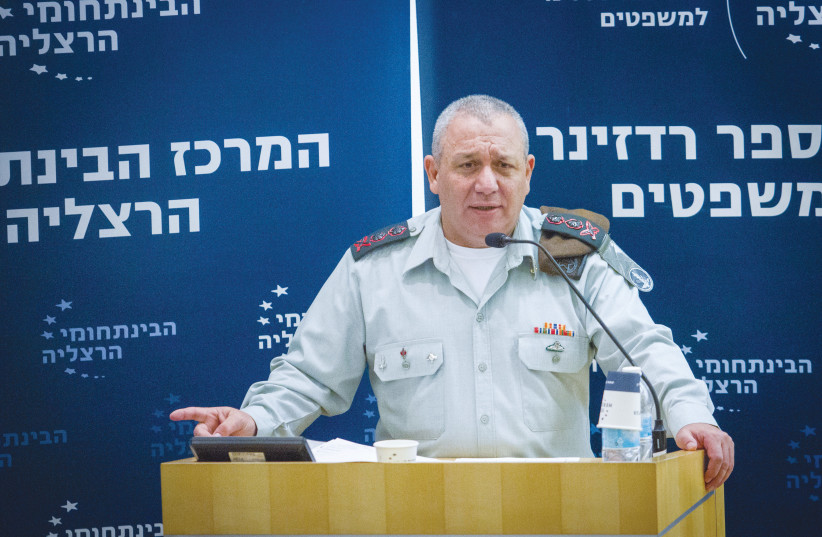War cabinet minister Gadi Eisenkot presented his vision for the State of Israel after the war in Gaza during a meeting of the war cabinet on Wednesday, Ynet reported early Friday morning.
The outline, put together by former IDF intelligence chief Amos Yadlin and the MIND Israel consultant group, includes goals for the immediate future, an intermediate period after the war, and the long term.
For the near future, the outline stresses the need to dismantle Hamas and to get a hostage release deal. The outline also includes a call for an American-Israeli-Arab coalition to transfer civil matters in Gaza local leaders in the Strip, to prevent the strengthening of Hamas in both Gaza and the West Bank, to end the conflict with Hezbollah, to promote relations with Saudi Arabia and other Arab and Muslim countries, and to work together to confront the threat posed by Iran.
Yadlin and MIND Israel’s document also calls for an Israeli-American agreement on the creation of a “Palestinian entity” that works to fight terrorism, end incitement, and stop “pay-for-slay” payments.
For the period right after the war, the consultants wrote that Israel should maintain freedom of operation in Gaza and create a buffer zone along the border. Israel would also work to ensure the Egypt-Gaza border is secured in coordination with Egypt and the US, according to the outline.

Additionally, a Palestinian technocrat will be tasked with handling civil and economic issues in Gaza. The technocrat will be supervised by the US, five Arab states, and the international community. Groups from the five Arab states will also be tasked with de-radicalizing the education system in Gaza and the West Bank.
The outline also calls for the closure of UNRWA and for the rehabilitation of the Gaza Strip to be conditional on the disarming of the Strip.
For the long term, the outline stresses that any decisions concerning the situation between Israel and the Palestinians will only be made in direct negotiations between the two sides after about five years from the end of the war. During the five-year period, the sides will monitor if the implemented reforms are effective.
Israel will not provide any commitment during the next five years for the establishment of a Palestinian state to ensure that the establishment of such a state isn’t seen as a “prize for Hamas.”
Outline came after Netanyahu published plan for after war
Eisenkot asked for the outline to be formed after Prime Minister Benjamin Netanyahu published his plan for what should happen in Gaza after the war, according to Ynet.
Netanyahu’s plan, published in late February, called in the immediate term for the IDF to retain security control of the Gaza Strip and the West Bank once the Gaza war is over, with a local Palestinian governance of technocrats ruling the enclave.
In the short term, the plan underscored Netanyahu’s principled position that Israel was determined to continue the war, which began on October 7, until it had destroyed Hamas, which has forcibly ruled Gaza since 2007.
In setting out his short and intermediate goals for Gaza, Netanyahu clarified that a complete IDF withdrawal from the Strip would not happen.
He also didn’t set a timeframe for his intermediate plan, which looked at the security and civilian aspects of life in Gaza after the war.
In addition, according to the plan, “the Gaza Strip will be completely demilitarized.” It alluded to a second domestic security force, akin to the police, that would maintain law and order.
The plan appeared to follow a model that now exists in the West Bank, where there is a Palestinian police force while the IDF maintains overall security control.
Netanyahu, in his “Day After” document, outlined civilian plans for Gaza in the intermediate period. Gaza governance, which had been in the hands of Hamas, will now be controlled by local Palestinians with administrative experience who are not identified with any country or entity that supports terrorism and receives payments from terrorists.
Netanyahu’s plan was short on long-term details. He neither accepted nor rejected the demands of the right-wing flank of his coalition for Israel to apply sovereignty to Gaza and allow for Jewish communities to be rebuilt there.
Tovah Lazaroff contributed to this report.
